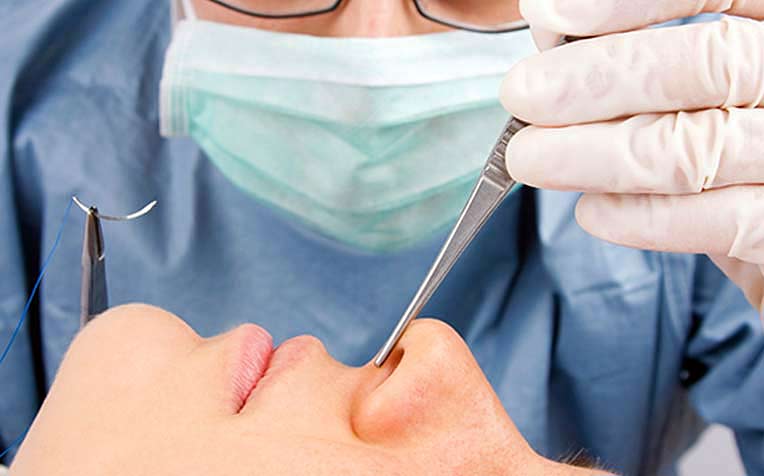HealthXchange will NEVER ask you to transfer money over a call. If in doubt, call the 24/7 ScamShield helpline at 1799, or visit the ScamShield website at www.scamshield.gov.sg.

Post-cancer rhinoplasty is reconstructive rhinoplasty (a nose job) performed to correct nose deformities resulting from nose cancer surgery.
What is reconstructive rhinoplasty after cancer surgery?
Reconstructive rhinoplasty is performed to correct deformities of the nose that are acquired as a result of cancer surgery or after direct trauma to the nose.
Post-cancer rhinoplasty
"The key to successful treatment of skin cancers over areas of the nose is complete excision of the tumour with a clear margin. This often leaves a defect that cannot be closed primarily. The skin overlying the nose can be quite tight, and after excision of skin cancers of the nose, the resulting defect or deformity can often be reconstructed with local flaps which borrow skin from the adjacent skin or more distant flaps such as forehead flaps (see image below)," says Dr Terence Goh, Visiting Consultant, Department of Plastic, Reconstructive & Aesthetic Surgery, Singapore General Hospital (SGH), a member of the SingHealth group.
.jpg) These skin flaps are raised to mobilise skin from the adjacent areas of the cheek, lip or even forehead to provide durable skin cover after cancer excision. If the cartilage framework of the nose is also affected, “replacement of like with like” (a mantra that is practiced by all plastic surgeons) is done with either ear cartilage or rib cartilage.
These skin flaps are raised to mobilise skin from the adjacent areas of the cheek, lip or even forehead to provide durable skin cover after cancer excision. If the cartilage framework of the nose is also affected, “replacement of like with like” (a mantra that is practiced by all plastic surgeons) is done with either ear cartilage or rib cartilage.
In severe cases, where the tissue loss is large, free tissue transfer may be required to reconstruct both the inner lining of the nose and the exterior. Whilst the reconstruction may require the surgery to be staged and the recovery can be long, the results are often satisfying for both the patients and surgeon.
Did you know there is Asian rhinoplasty? How is Asian rhinoplasty different from conventional rhinoplasty? And how has it evolved? Read on to find out!
Ref: N18
Contributed by
Related Articles
Public Events
Get the Health Buddy App
© 2025 SingHealth Group. All Rights Reserved.


















 Get it on Google Play
Get it on Google Play